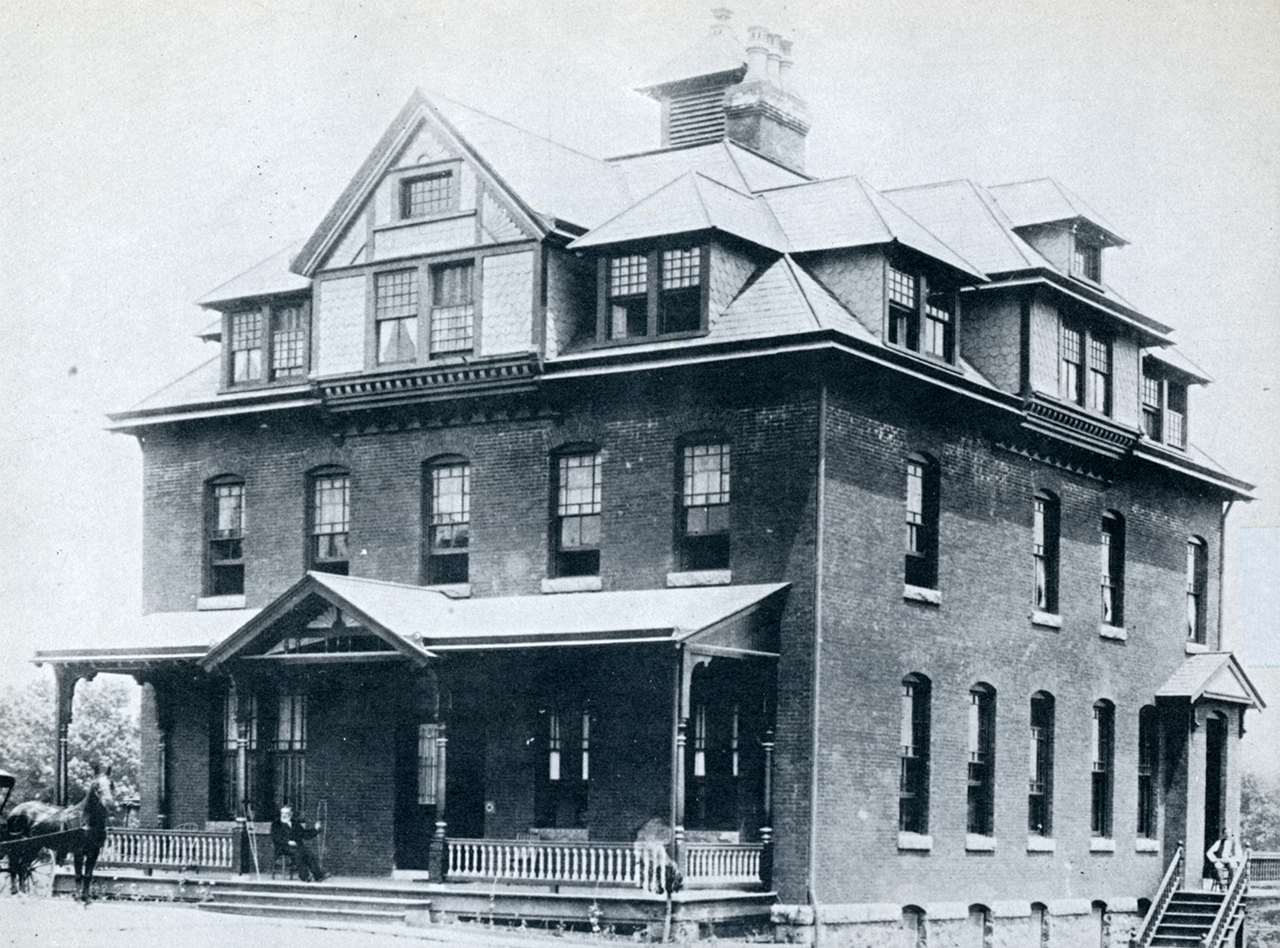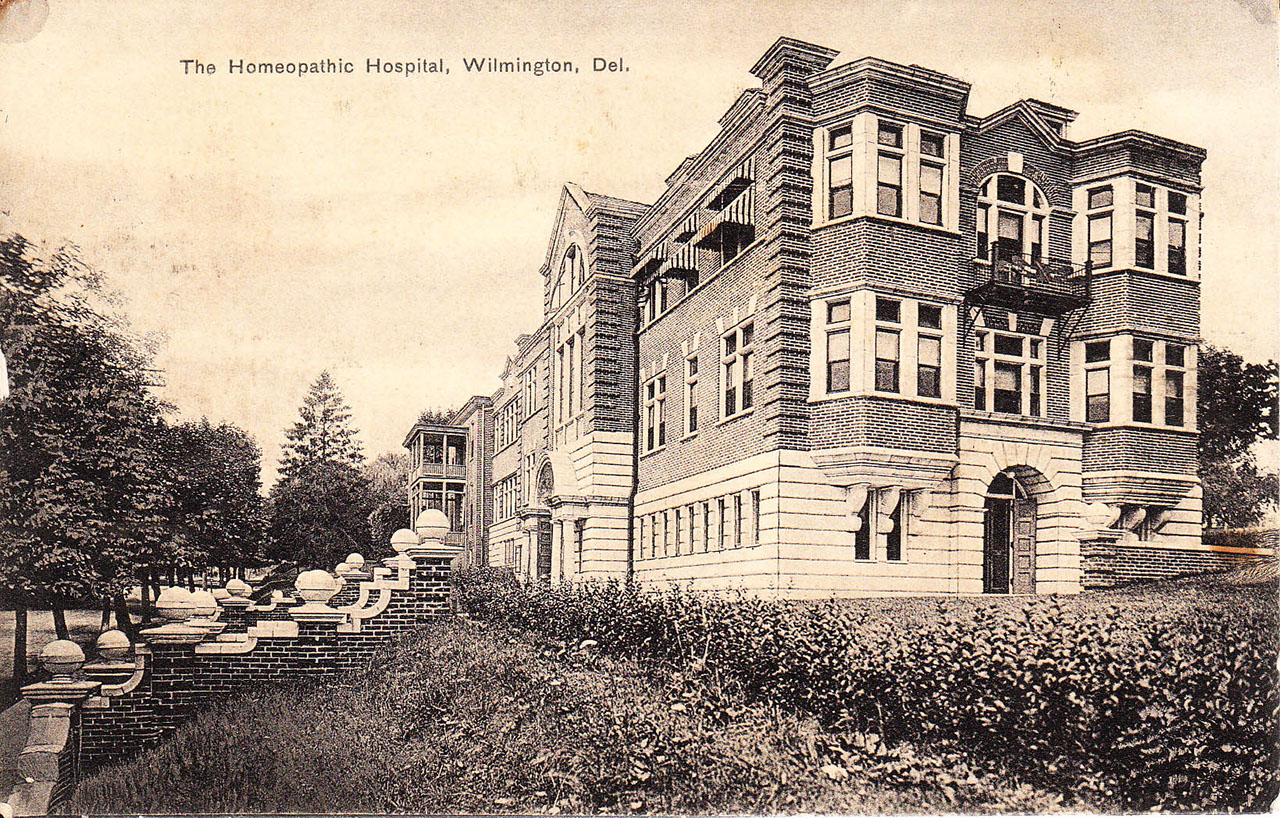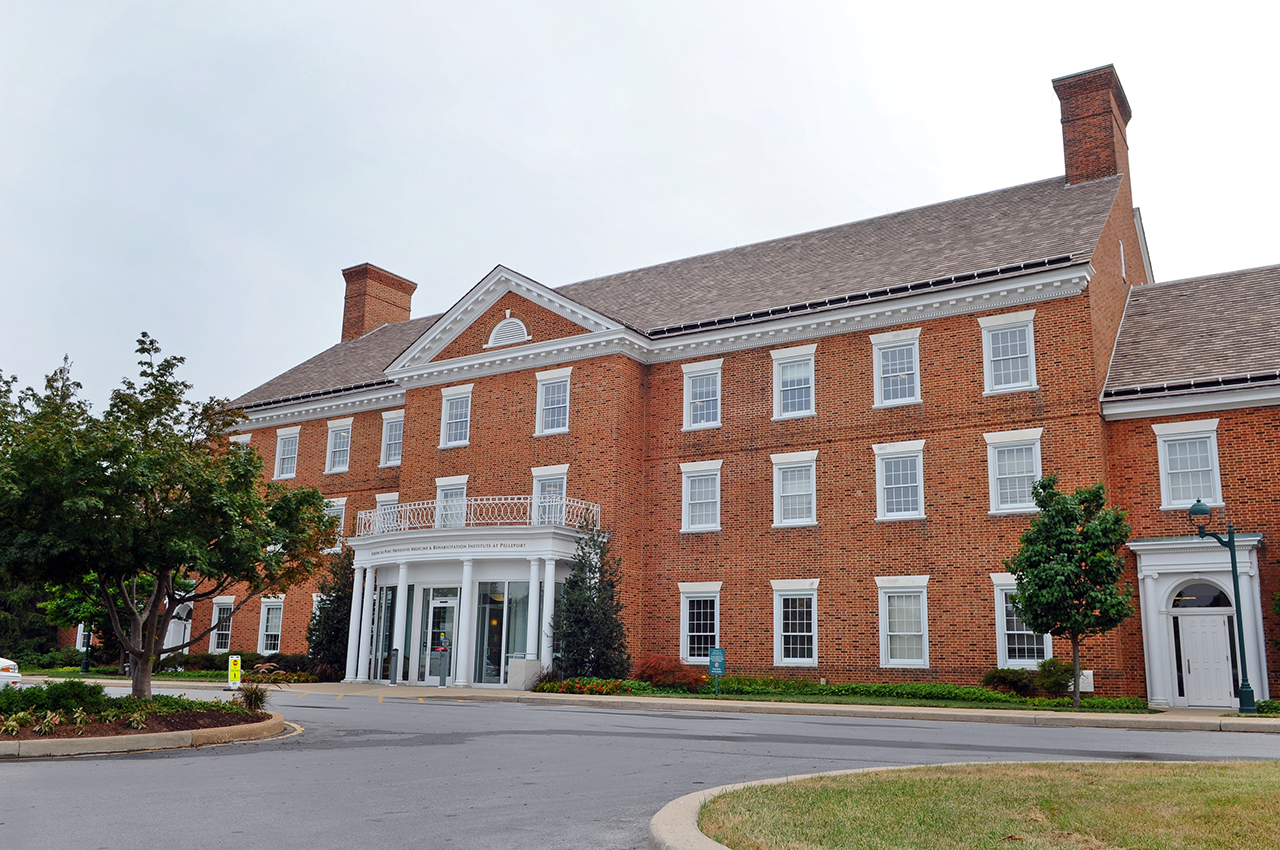Login
Who We Are
Our History
More than 100 years of care.
ChristianaCare At a Glance
ChristianaCare is the culmination of more than 100 years of history and the merging of separate hospitals into a unified, modern health system.
What began as competing visions of community health care in Wilmington, Delaware, more than a century ago has become one of the premiere health care systems on the East Coast, with a strong commitment to improve the health of everyone in the communities it serves.
ChristianaCare gets its name from the nearby town of Christiana, Delaware. Listed on the National Register of Historic Places, it was one of the earliest colonial towns in America, founded by Swedish colonists in the 17th century along the Christina River.
When a new hospital opened in January 1985 near Christiana, it adopted the name: Christiana Hospital. That moniker served as the foundation for the ChristianaCare we know today.
Origins in 19th Century Wilmington
Wilmington, Del., in 1887 clearly needed a hospital. People injured in accidents were usually given care at the scene. Victims of railroad accidents, which were all too common in those days, were treated at the office of the Wilmington railroad detective, who was as proficient at dressing wounds as the town surgeon. When it was thought necessary, limbs were amputated at the police station or at the doctor’s office, and the victim was sent home to recover.
Delaware Hospital to Wilmington Hospital
The allopathic physicians bought land at 14th and Washington streets in Wilmington to begin building their own hospital. Named the Delaware Hospital, it opened in 1890. It was constructed so that additional wings could be added as demand for health care increased. During the first year, 161 patients were treated at the new facility.
 The original Delaware Hospital, opened in 1890
The original Delaware Hospital, opened in 1890
A decade later, the allopaths’ vision proved correct. With increased patient admissions and a growing population, the Delaware Hospital began the 20th century by building a $41,000 wing that contained 16 private rooms ranging in price from $10 to $30 a week. In 1906, Delaware Hospital’s first X-ray department opened, offering X-rays that took five minutes to capture an image and used 100,000 volts or more. In the first year, 40 X-rays were done at a cost of $1 each.
In 1910, a children’s ward was established, making Delaware Hospital a pioneer in neonatal care. A recognition of the importance of mother’s milk in the care of premature infants resulted in the formation of the Mother’s Milk Bank, one of the first in the nation, established through the efforts of Dr. Margaret I. Handy. And in 1924, a fourth floor was added to the new wing for maternity patients.
 The children's ward at Delaware Hospital, which opened in 1910
The children's ward at Delaware Hospital, which opened in 1910
By 1939, 5,000 people were being treated annually at the hospital. Consequently, another building program was begun. In 1940, a patient facility containing 120 beds, five operating rooms and two delivery rooms opened. In 1941, a second building was in operation containing wards and clinics. A third building opened in 1942 for use as a nurses’ residence for students in the hospital training programs.
In 1981, a $22 million renovation of the hospital was completed, and in 1985 it was renamed the Wilmington Hospital. Today, a new project promises to complete the transformation of Wilmington Hospital into a model of high-quality health care for the 21st century.
 Delaware Hospital in the 1960s
Delaware Hospital in the 1960s
Homeopathic Hospital / Memorial Hospital
J. Walter Gause, a prominent Wilmingtonian, bought the Heald Home on the corner of Van Buren Street and Shallcross Avenue and donated it to the homeopathic committee for use as a hospital. Known as the Homeopathic Hospital, it opened its doors on Feb. 10, 1888. During its first year of operation, 271 patients were treated, paying a total of $159 for the health care they received.
 The Homeopathic Hospital, which became Memorial Hospital
The Homeopathic Hospital, which became Memorial Hospital
Physicians and Surgeons Hospital
In January, 1921, the Physicians and Surgeons Hospital established the first unit in Wilmington for patients with contagious diseases, in an estate formerly owned by the McKay family. Until this unit opened, patients suffering from contagious diseases were usually quarantined in their own homes with a red warning sign posted on the front door.
 Walter S. Carpenter lays the cornerstone for Wilmington General Hospital in 1957
Walter S. Carpenter lays the cornerstone for Wilmington General Hospital in 1957
Because of the demands made upon it, the Adams Street building became inadequate, and property consisting of two city blocks was purchased on Broom and Chestnut streets for expansion. In 1928, the Physicians and Surgeons Hospital name was changed to Wilmington General Hospital Association, and a beautiful new structure of Georgian architecture opened to the public, offering a normal capacity of 80 beds. Additional ground was purchased in 1929, and the complex now covered four city blocks. A nurses’ residence and a training school opened that same year.
In 1938, a maternity unit was constructed, and additions were built throughout the years. In 1965, Wilmington General expanded the concept of maternal health care, making it more family-centered. To fulfill the family-centered concept, the first private labor and birthing rooms were added. This huge complex continued to provide high-quality health care in Wilmington until 1985.
 Wilmington General Hospital in 1966
Wilmington General Hospital in 1966
The beautiful marble relief of Andrea Della Robbia‘s “Bambino,” executed by noted Philadelphia sculptor Joseph H. Bass, was located at this site in 1938. Today it is mounted in a place of honor in front of the Women’s Health Services wing at Christiana Hospital. The original is housed in the Children’s Hospital in Florence, Italy.
From Separate Hospitals to an Integrated Health System
Increasingly sophisticated medical technology and a rapidly growing population strained the ability for the individual hospitals to provide the best possible quality health care. The idea to merge the Delaware, Memorial and Wilmington General Hospitals took hold, and it was agreed that a unified hospital system with more than 1,000 beds could offer better patient care and medical education than if the hospitals remained separate and independent. In 1965, the three hospitals became “divisions,” and merged to become the Wilmington Medical Center.
In 1970, Wilmington Medical Center established educational affiliation with Thomas Jefferson University Medical College of Philadelphia, Pa. The programs and services offered by the Wilmington Medical Center were growing fast, making it difficult for the three divisions—already contending with physical problems—to adapt. A decision had to be made whether to renovate or build new.
The tide turned in favor of Plan Omega, which included building a 780-bed hospital near Christiana, Del., while razing two of the three divisions and renovating the third. Construction of Christiana Hospital began on Nov. 9, 1981. Land for the hospital was donated by the Welfare Foundation. A key part of the expansion plan was a thorough renovation of the Delaware Division, which would become Wilmington Hospital. The Memorial and General divisions were sold and razed.
 Christiana Hospital in 2021
Christiana Hospital in 2021
In 1994, the Eugene duPont Preventive Medicine and Rehabilitation Institute at Pelleport was established, marking a new emphasis on preventive medicine. Renovations at Pelleport were completed by 1997.
 The Eugene duPont Preventive Medicine and Rehabilitation Institute at Pelleport
The Eugene duPont Preventive Medicine and Rehabilitation Institute at Pelleport
In 1995, two major expansion projects at Christiana Hospital were completed to better serve community needs: a new emergency and trauma center, and new women’s health wing. In years to come, the campus would grow to include the Center for Heart & Vascular Health and the Helen F. Graham Cancer Center.
But the most significant change of the 1990s—indeed, in the history of the health system—had little to do with brick and mortar, with mergers or land acquisition, or with hospitals alone. The most significant change was the establishment of ChristianaCare as a fully coordinated health system, providing a spectrum of services that include prevention, primary-care disease diagnosis and management, rehabilitation, home health care and much more.
 The Helen F. Graham Cancer Center
The Helen F. Graham Cancer Center
Today, the name ChristianaCare signals a unified and coordinated health system that works closely with community physicians to improve the health of everyone in the communities it serves
Special thanks to the Junior Board of ChristianaCare for their scholarship in helping to produce this history of ChristianaCare. This history can also be found in “A Century of Serving,” a cookbook produced by the Junior Board, which can be purchased in the hospital gift shops.

